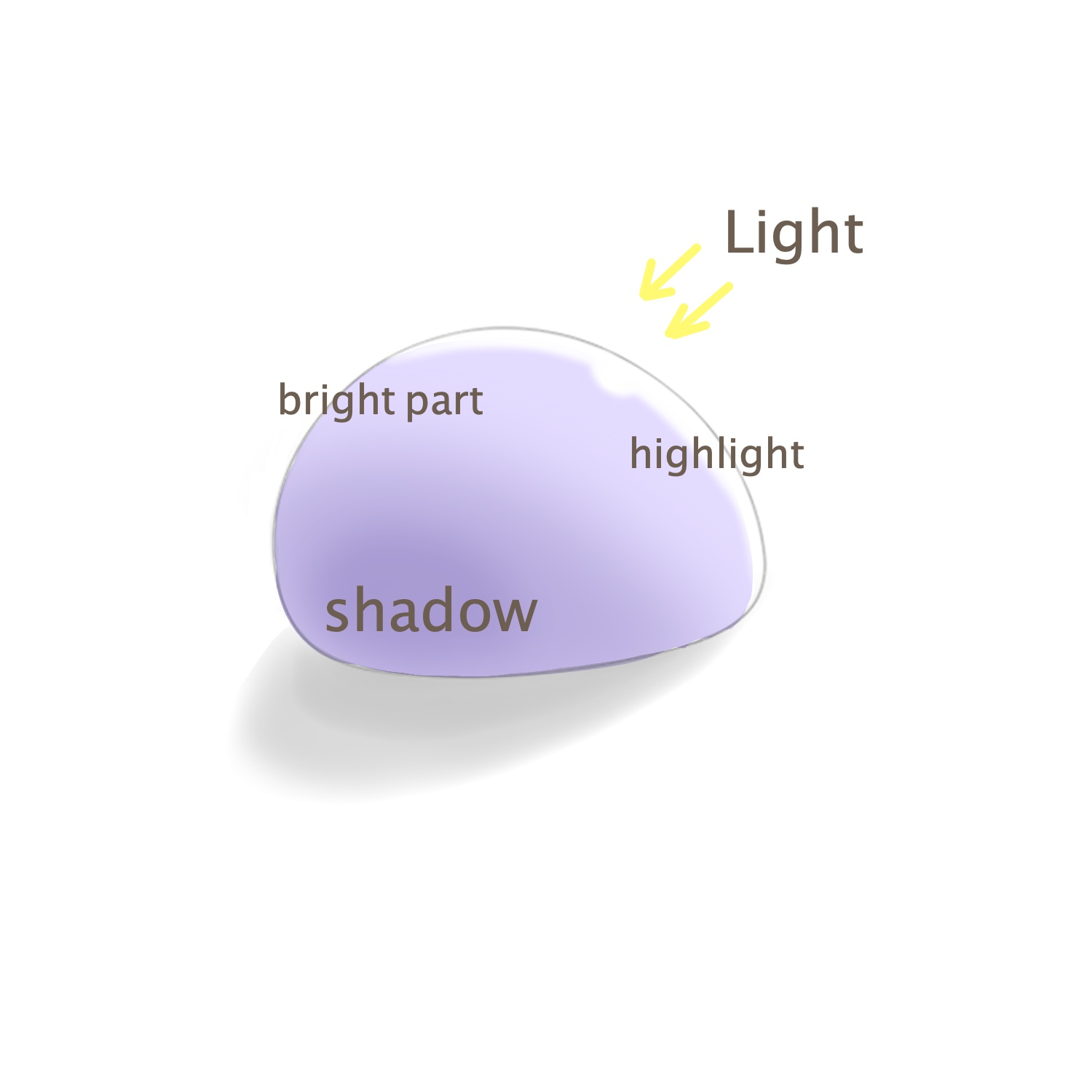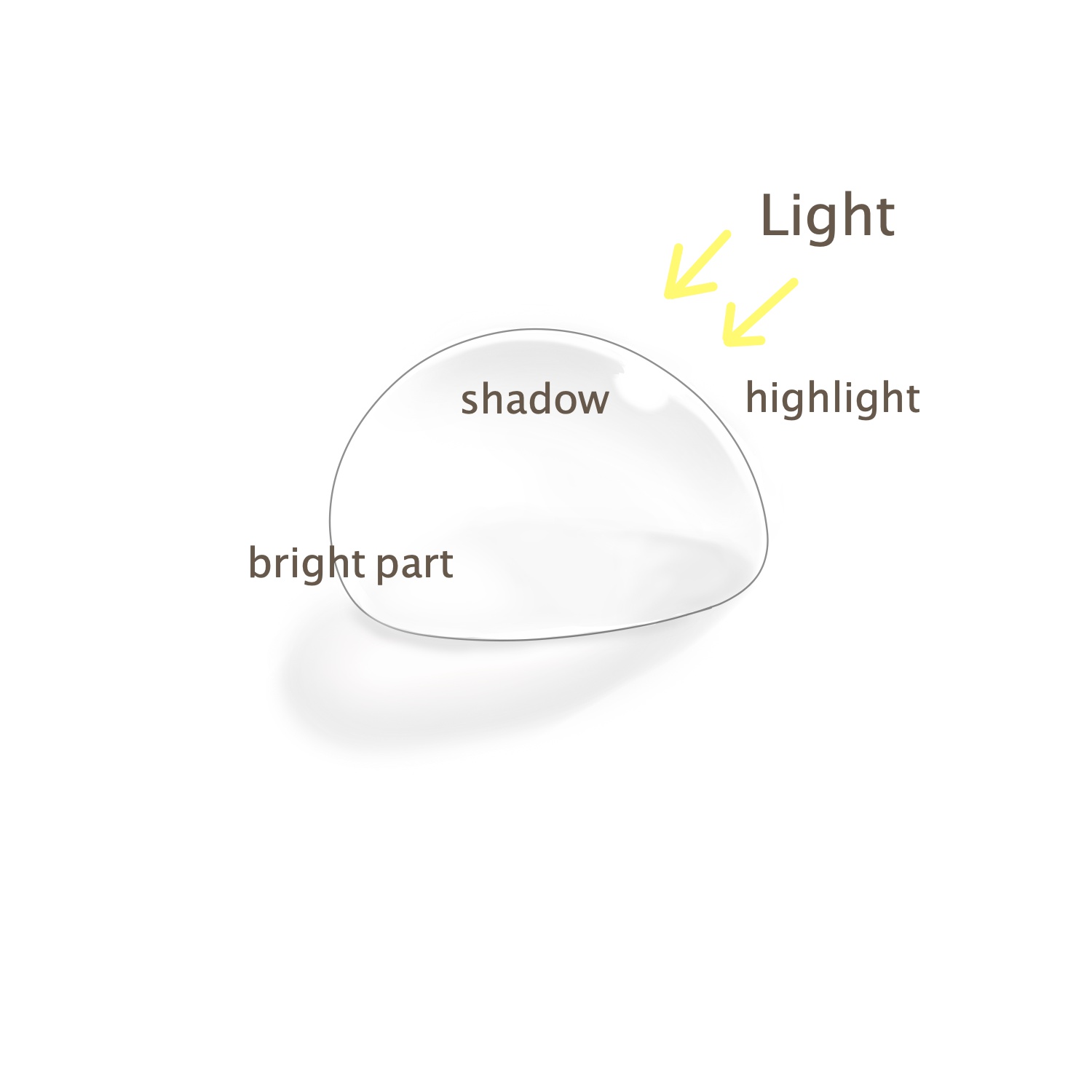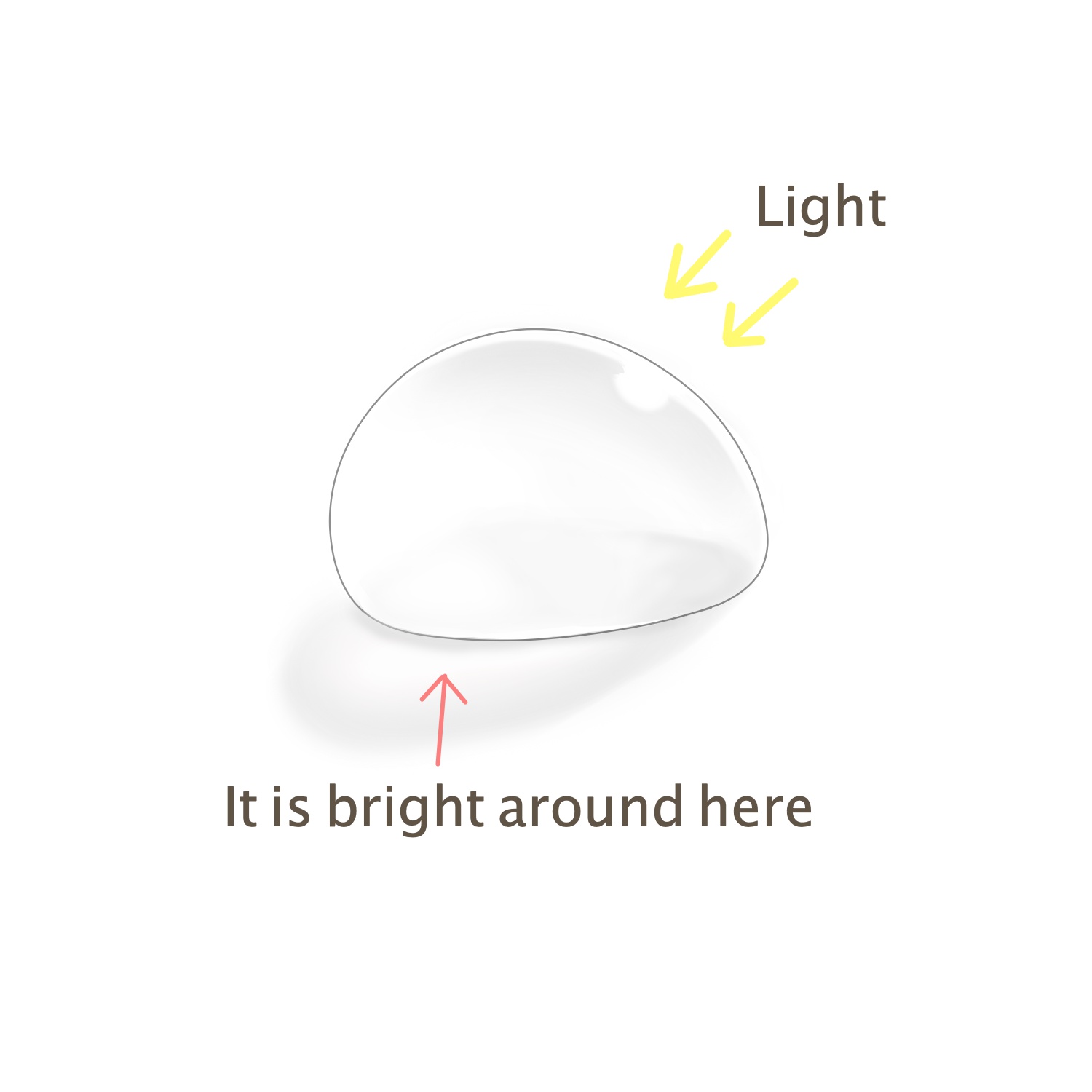How To Draw Water Drops With Watercolor
Sweat and tears produce the expressions of your character.
Dewdrops express the freshness of vegetables and fruits.
These sweat and tears, or water drops like dewdrops, are one of the techniques that bring out the appeal of illustrations.
Here, we introduce how to draw such water drops.
1.Characteristics of water drop you should know
1-1.How to add light and shadow
A water drop is a state when "transparent water" becomes a single drop of water.
Light travels through transparent objects, so you add light and shadow differently than ordinary objects.
[Ordinary objects]

/highlight: light source side
/bright part: towards the light source
/shadow: opposite from the light source
[Water drop]

/highlight: light source side
/bright part: towards the opposite of the light source
/shadow: light source side
1-2.Reflection

On transparent water drops, objects nearby are reflected, and objects on the other side can be seen through.
By thoroughly drawing the reflections, you can express the water drop trait more realistically, but you can skip this depending on the taste of your illustration.
For simple drawings, you can draw in a thick shadow on the inner side to express a water drop simply.
Depending on the taste, adjust how much you draw in.
1-3.Depending on the conditions, the inner side of the shadow may be bright
Light does not pass through ordinary objects, so on the opposite side of the light source, dark shadow forms.
On the other hand, light passes through water drops, so on the other side of the light source, a bright part may form on the shadow.

When the light source is nearly right above, far away, or the light is weak, the shadow forms as usual, so you don't need to worry about it so much, but if you know about this, you can have more ways to express.
You can stress how transparent water drops are or stress the light, so it is also recommended for illustrations of shining morning dew.
2.How to draw water drops
Here, let's look at how to draw water drops.
[Basic drawing techniques]
1.Draw the foundation with a somewhat thicker color than the base color
First, make a new layer and place it on top of the base layer.
After that, use a somewhat thicker color than the base color to draw the foundation on a new layer.
When you select the foundation color, it is easy to select when you imagine "a little thicker color than before" of drawing paper or cloths when they get wet.

2.Draw in the shadow
Next, draw the shadow on the light source side.
First, make a new layer, place it on the foundation layer, and do clipping.
Next, choose a somewhat darker color than the foundation and use an airbrush to put in shadow on the light source side.
When it's hard to fit, use a Gaussian Blur to make it fit the base.

3.Draw in the bright part
When you finish drawing the shadow, this time, you put in light on the other side of the light source.
Select a somewhat brighter color than the base color and draw in using an airbrush.
When you do this, it fits better if you use the Gaussian Blur after you draw in.
For this process, you can save time if you draw it in the same layer as the shadow, then use Gaussian Blur at the point you finish drawing both the shadow and the light.
When you separate the layers, remember to do clipping on the layer of the light side as well.

4.Connecting the space between the shadow and the light
When you finished drawing the light part, next, draw the space between the shadow and the light like connecting the two.
First, make a new layer on the foundation.
Next, use the Pick Color to pick up the color of the border of the light and the foundation area, then use an airbrush to extend the colors to the area where you can see the foundation, making it be a gradation as you connect the colors to the shadow.

5.Insert light on the light source side
This time, draw in light on the edge on the light source side.
Make a new layer at the very top and do clipping. (It is fine to draw on the light layer as well.)
From the light on the opposite side of the light source, pick up the brightest color, and use an airbrush to trace along the wall of the water drop.

6.Insert highlights
On the light source side, use the pen tool to insert white highlights.

7.Add shadows
Finally, draw in shadow that forms under the water drop.
Make a layer on the base layer and use an airbrush to draw in the shadow, then it's complete.
For the shadow color, use Pick Color and pick up the darkest color of the shadow on the light source side.

Also, depending on the size of the bright part and shape of the highlight, the height and thickness of the waterdrop appear differently.
Make adjustments to match the water drop you want to draw.

Flowing sweat and tears basically follows the same drawing techniques.
To make the part that starts to flow connect to the base well, the point is to use an airbrush to make it fit.

(Sweat/tears)
How To Draw Water Drops With Watercolor
Source: https://medibangpaint.com/en/use/2020/04/how-to-draw-water-drops/
Posted by: caballeroarriess.blogspot.com

0 Response to "How To Draw Water Drops With Watercolor"
Post a Comment